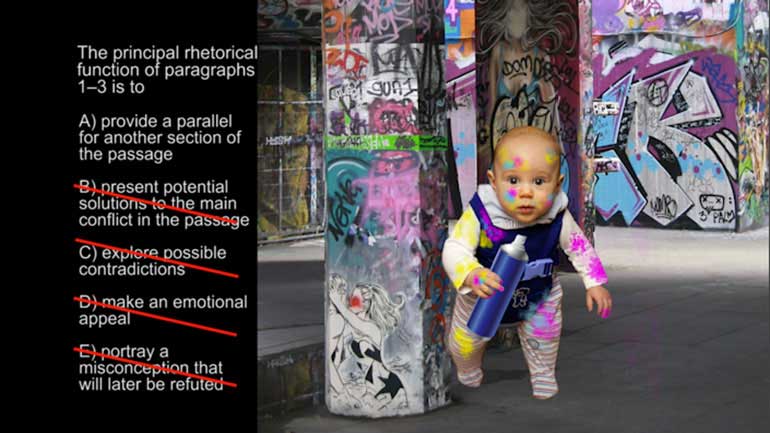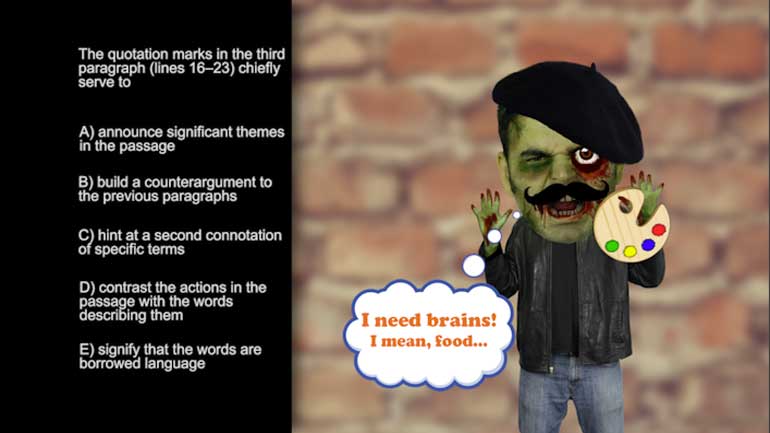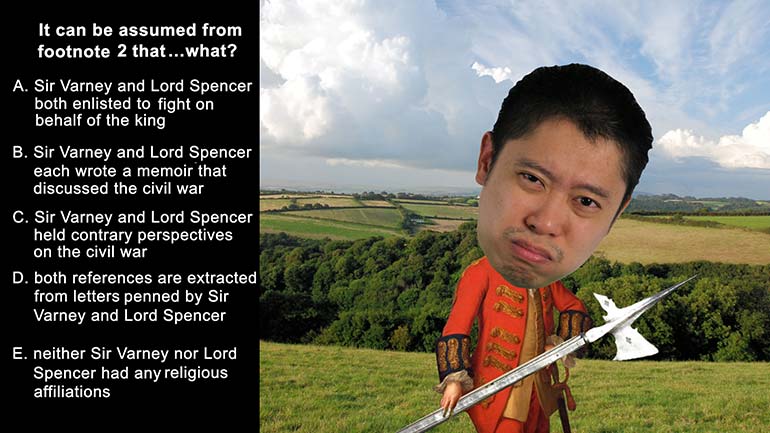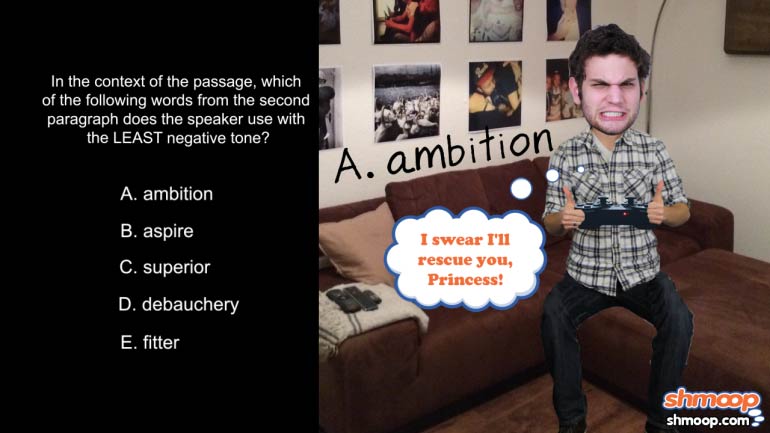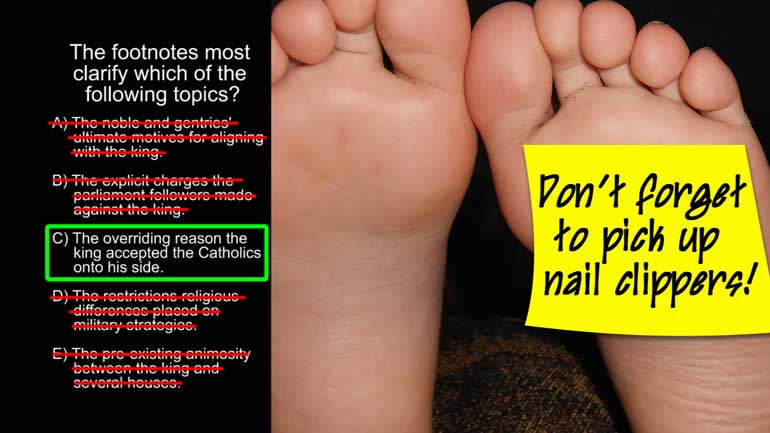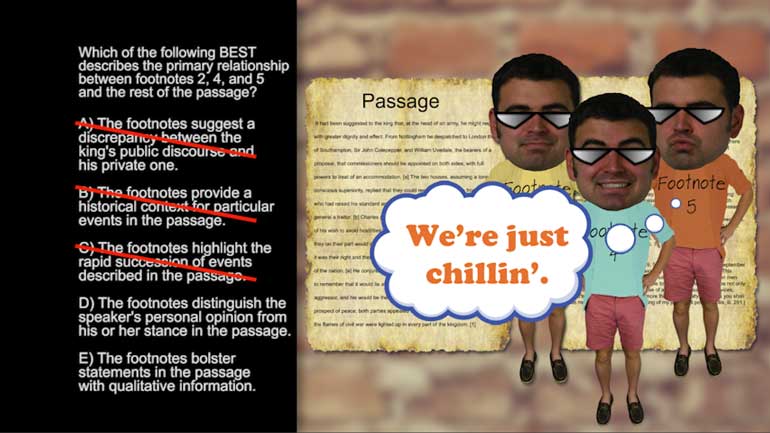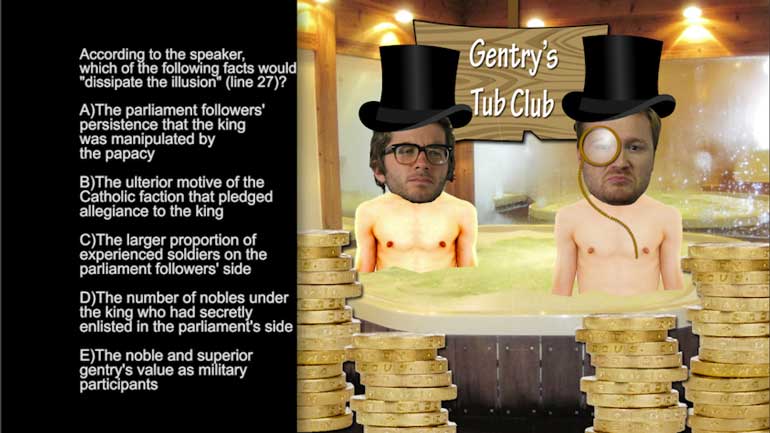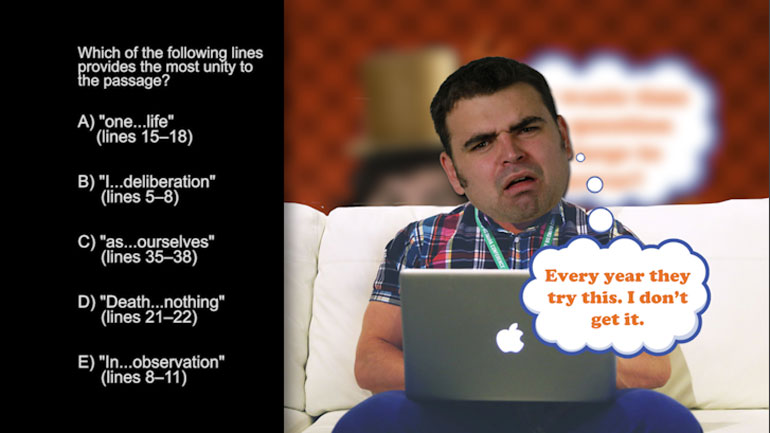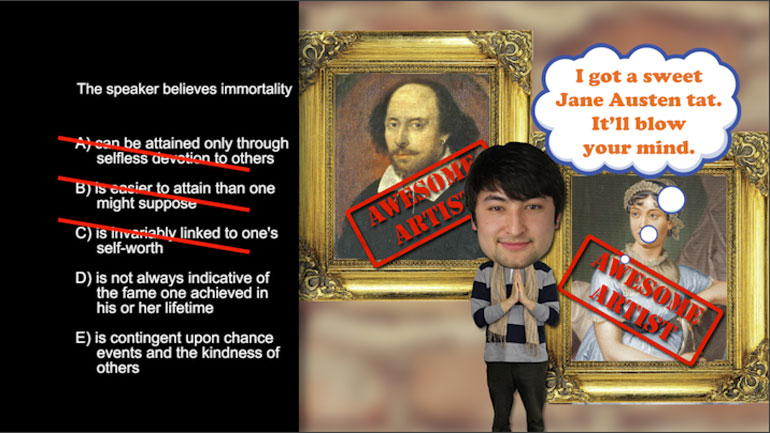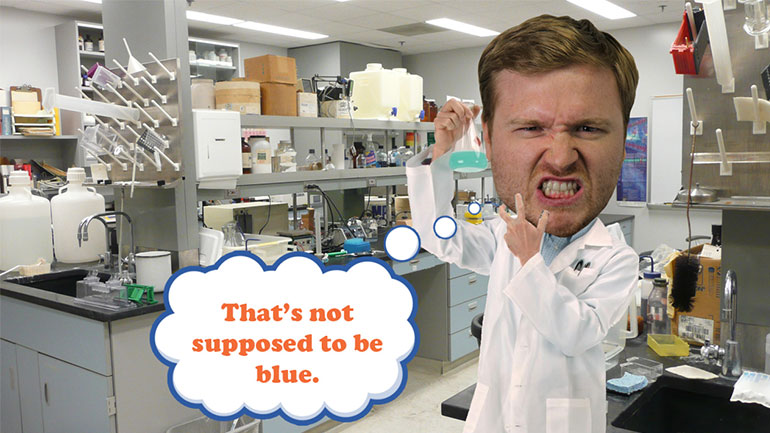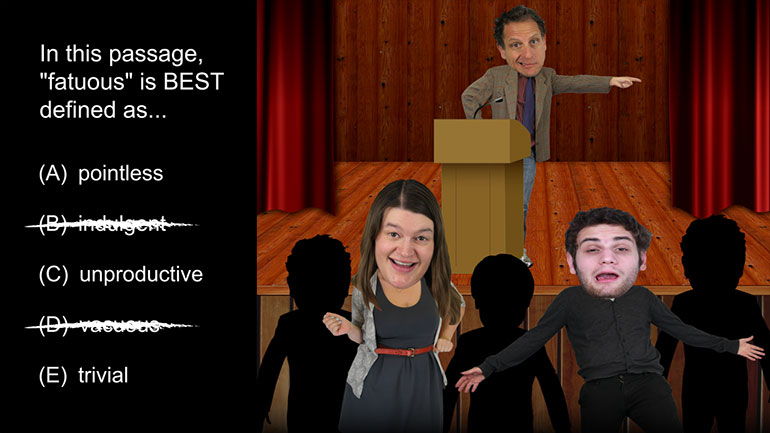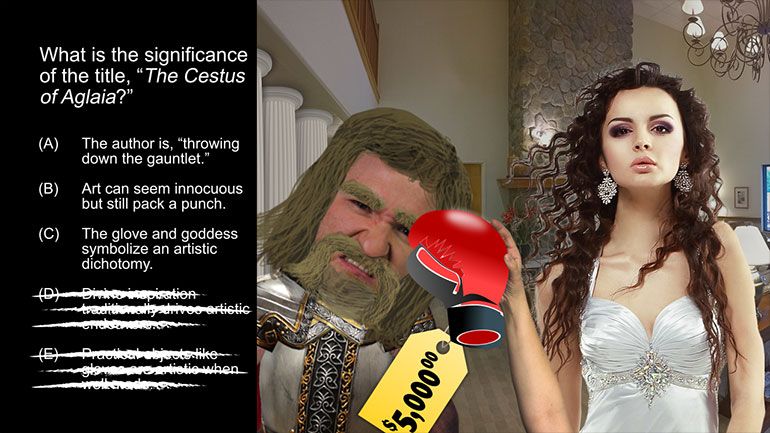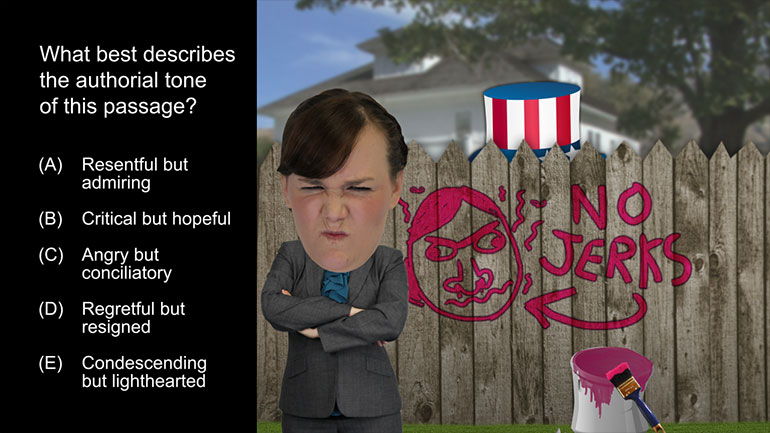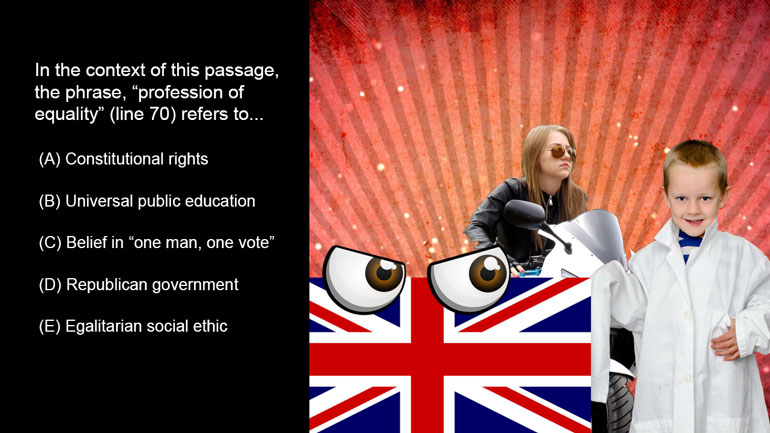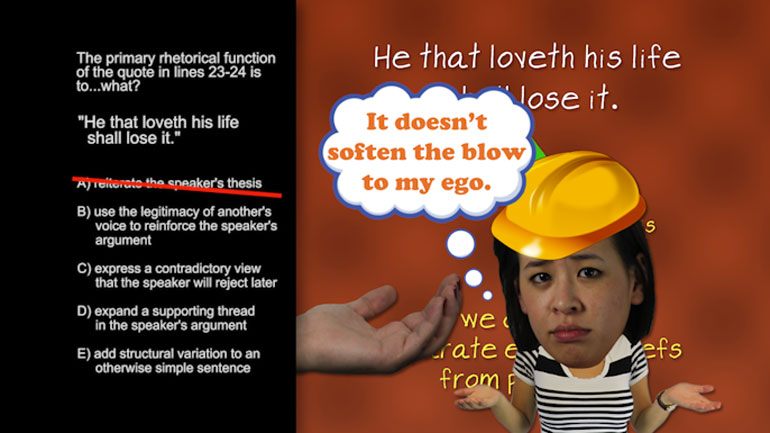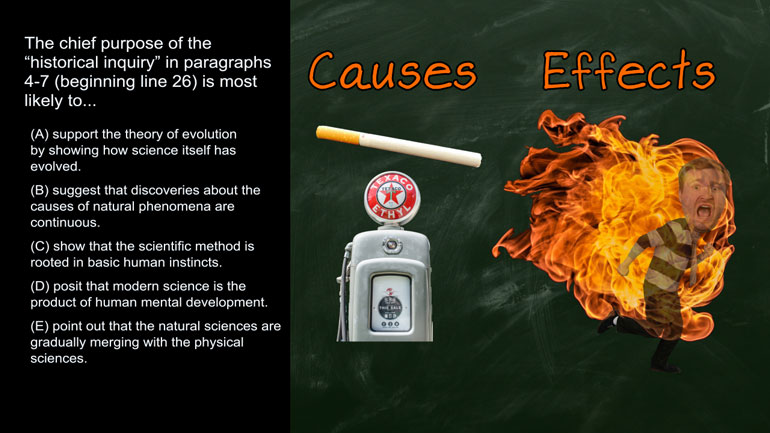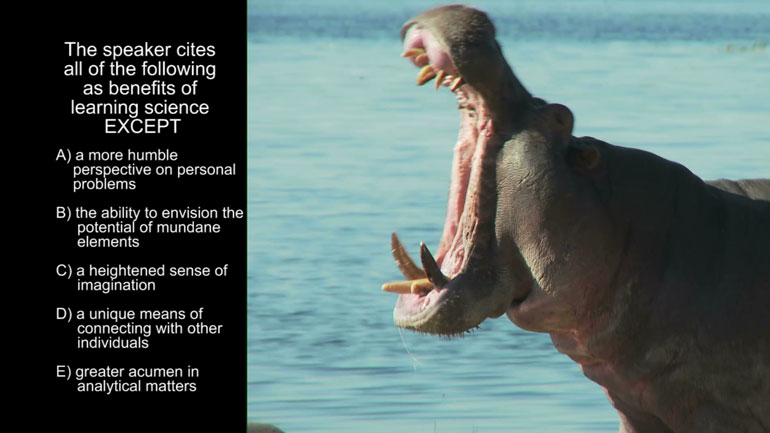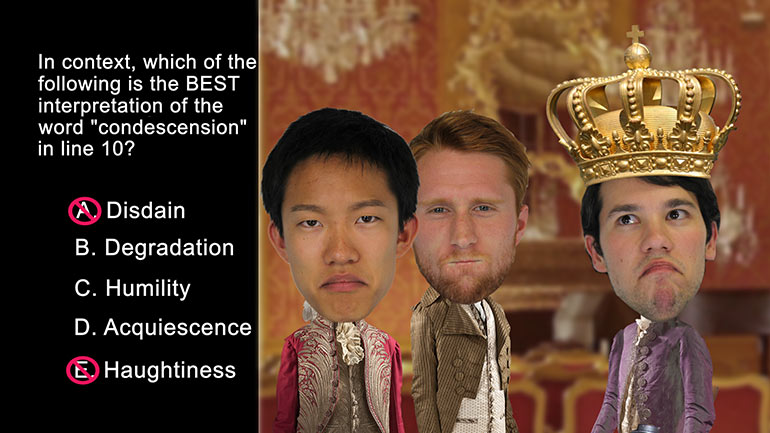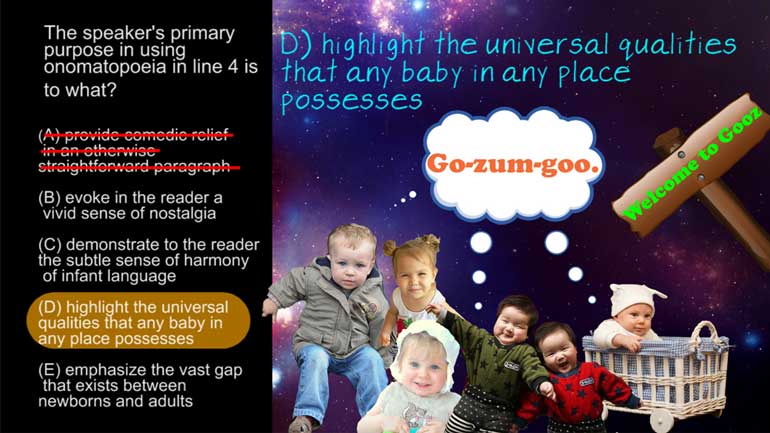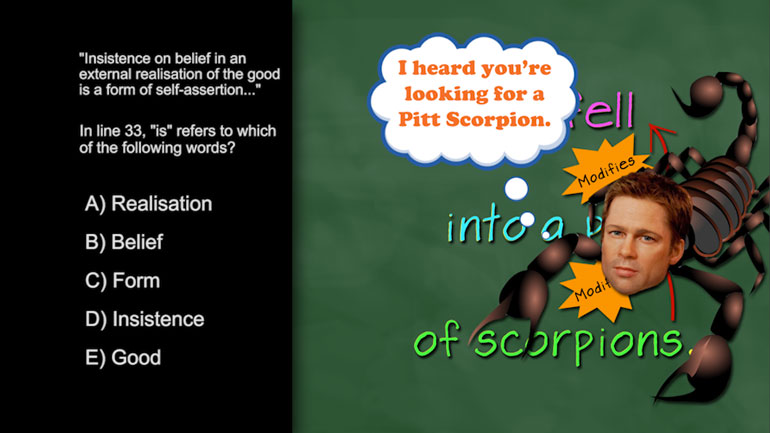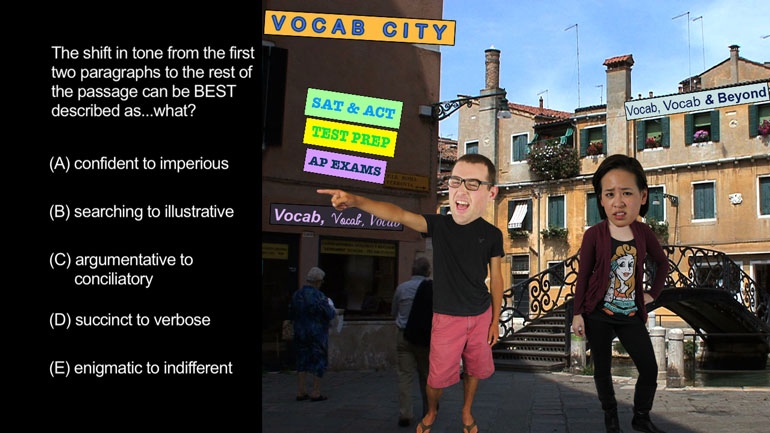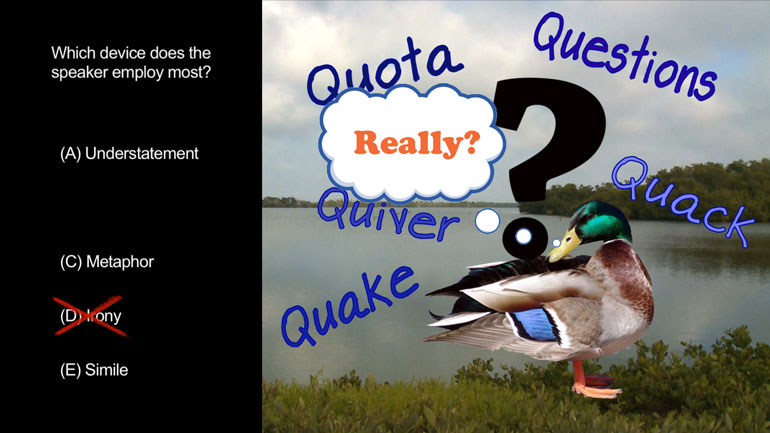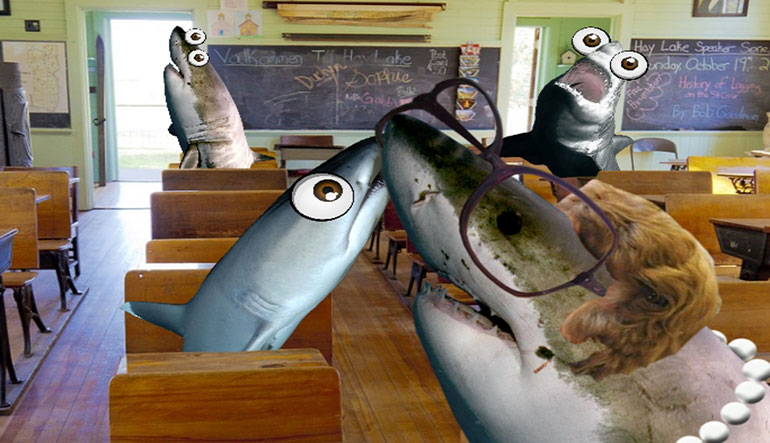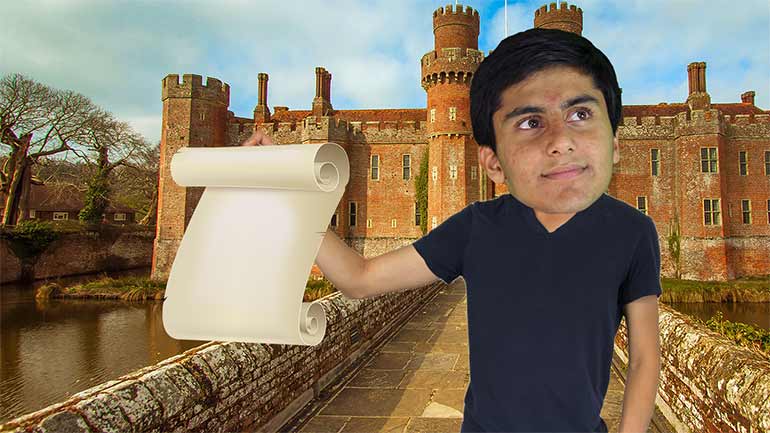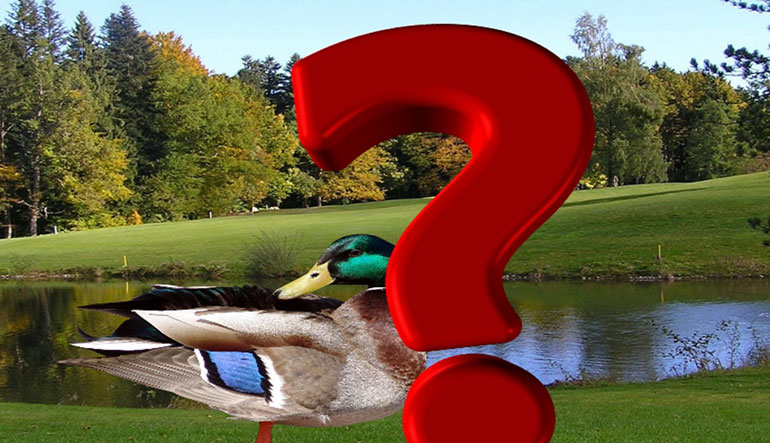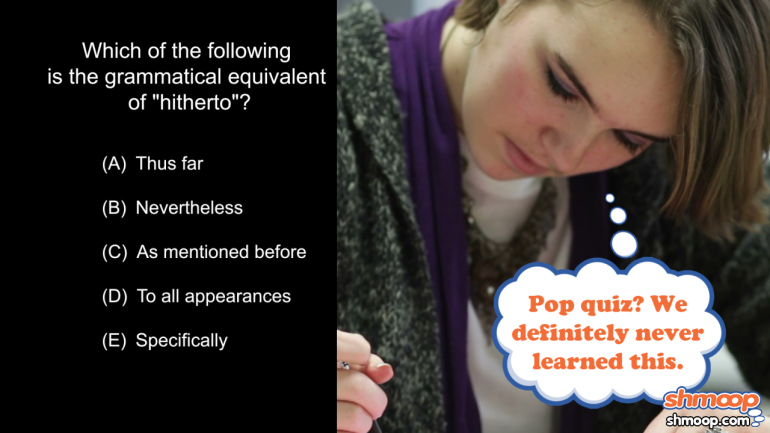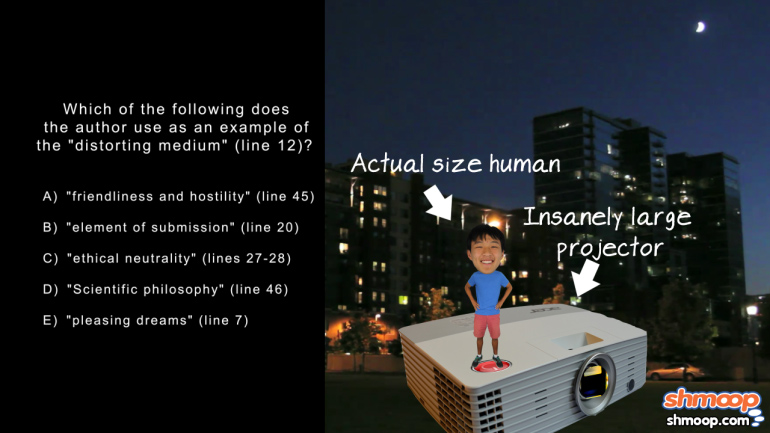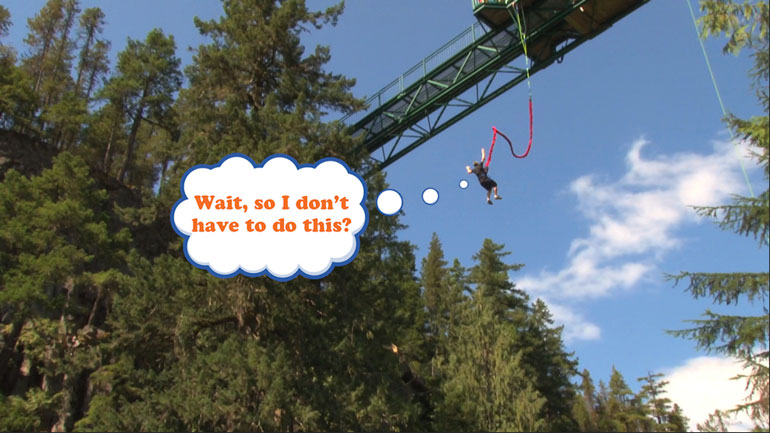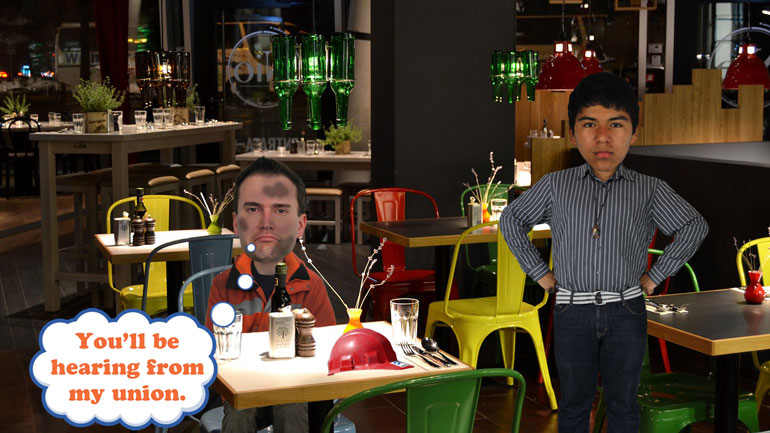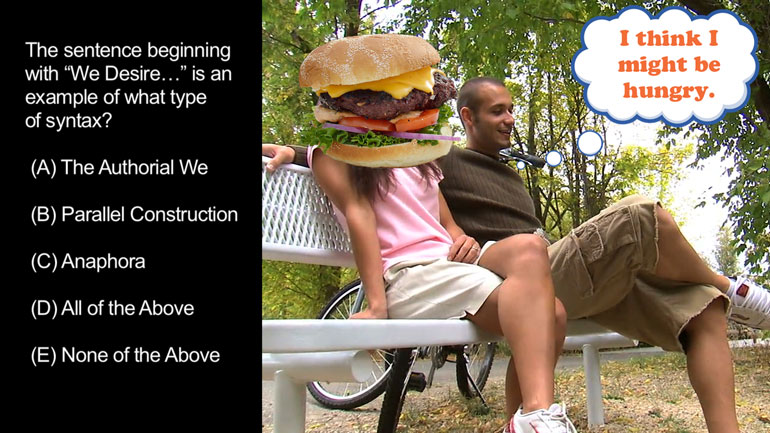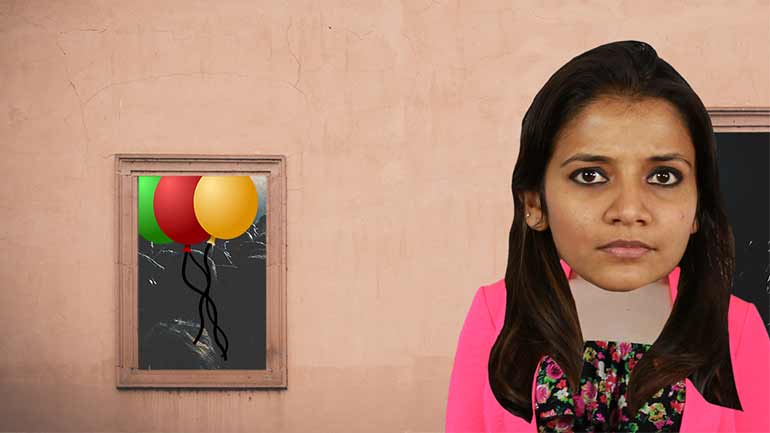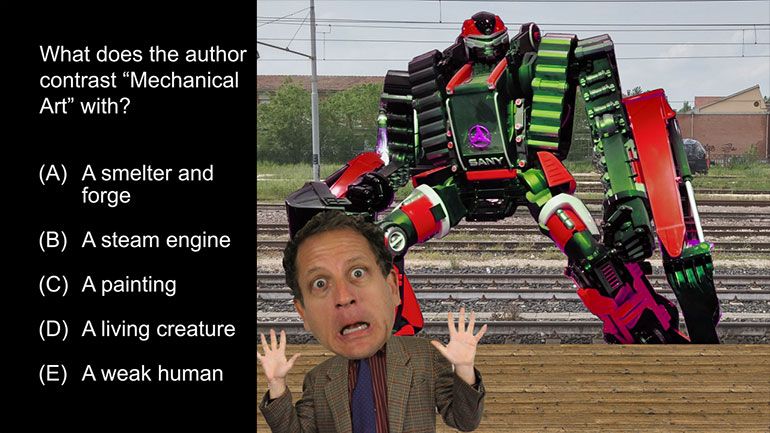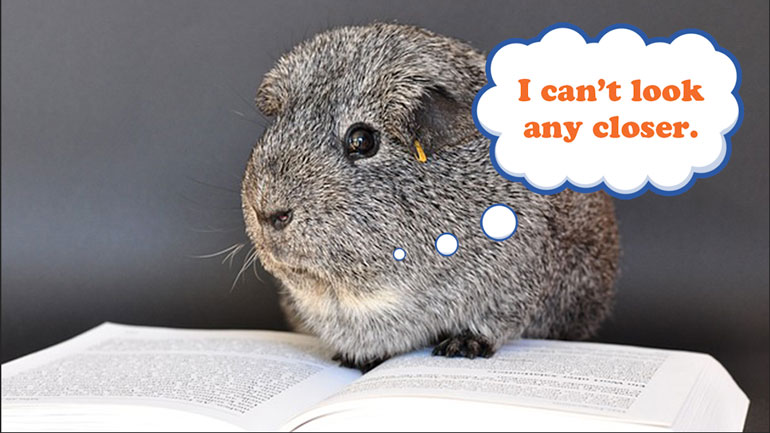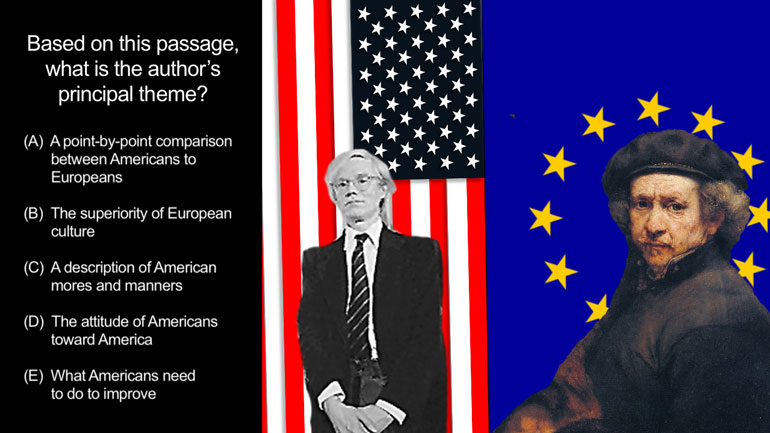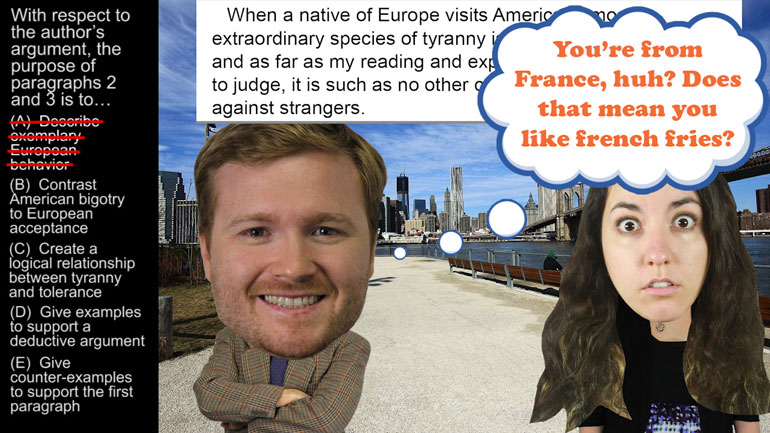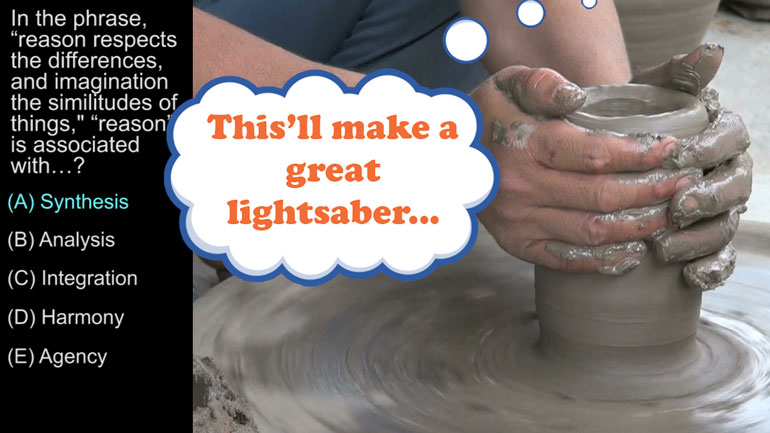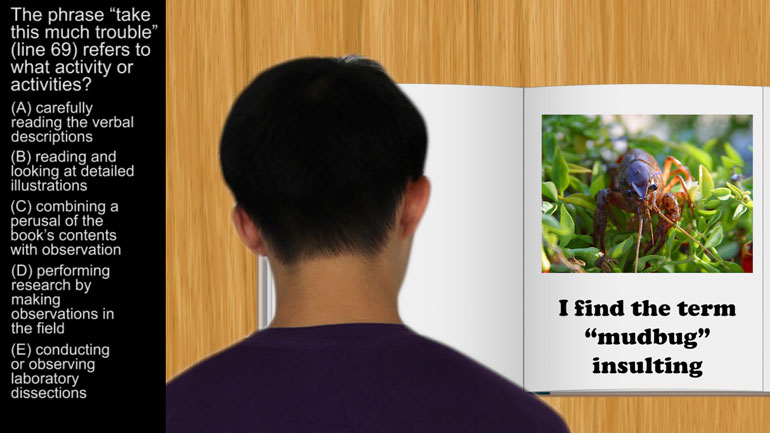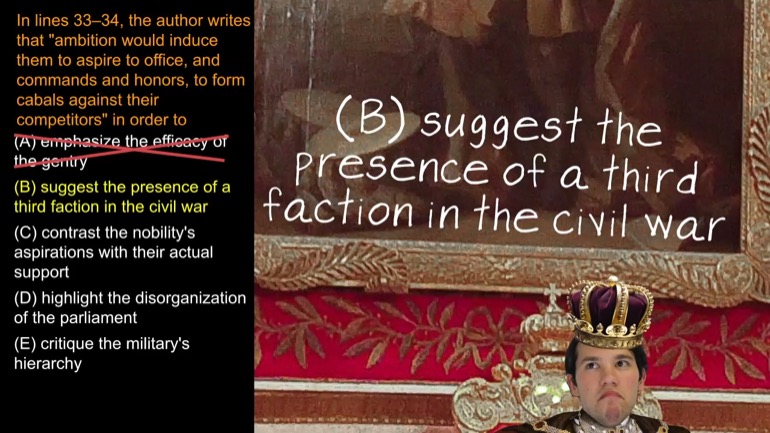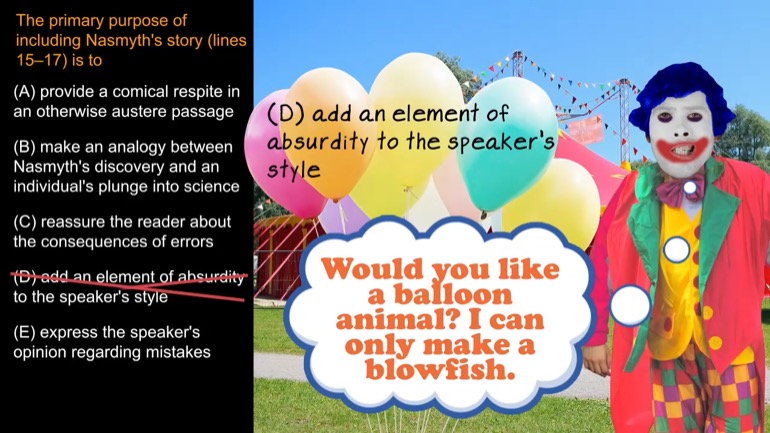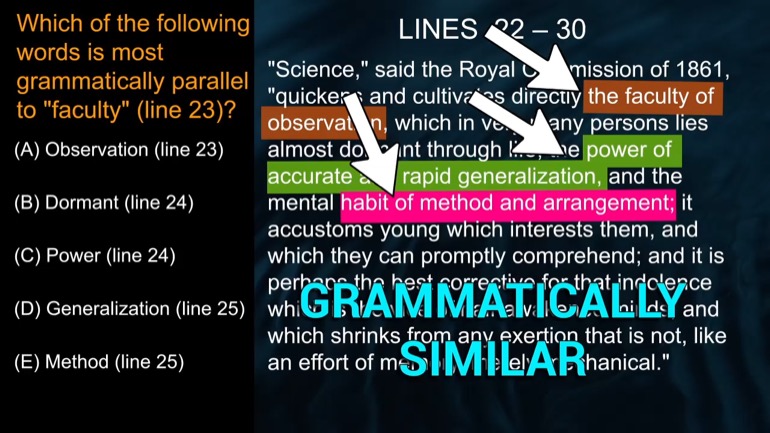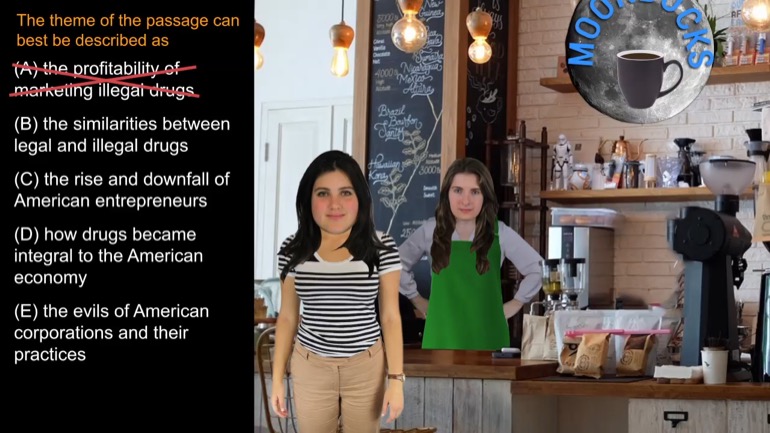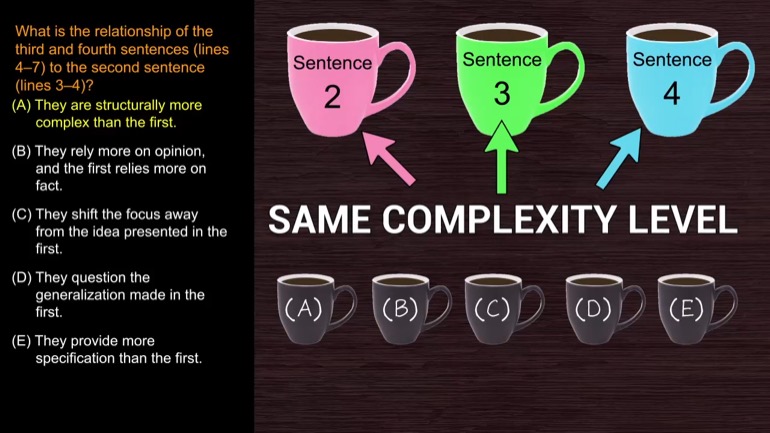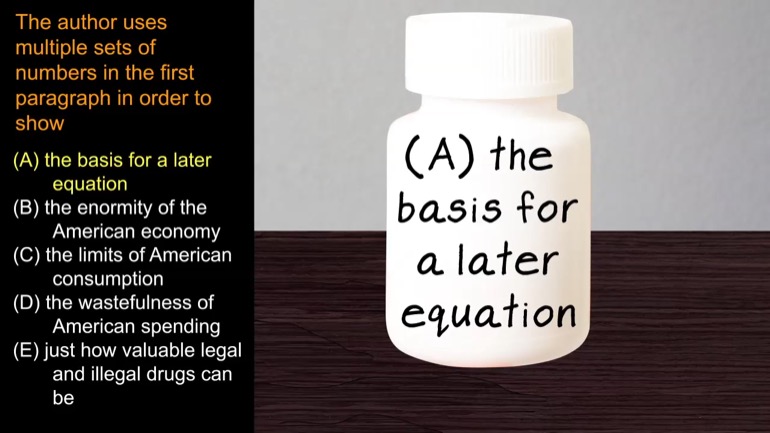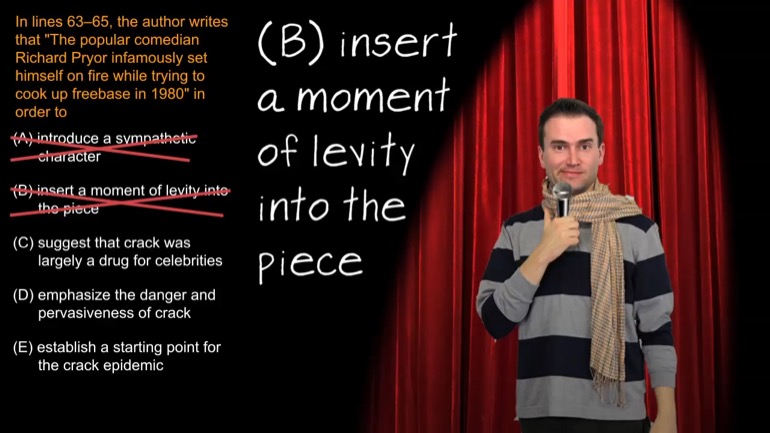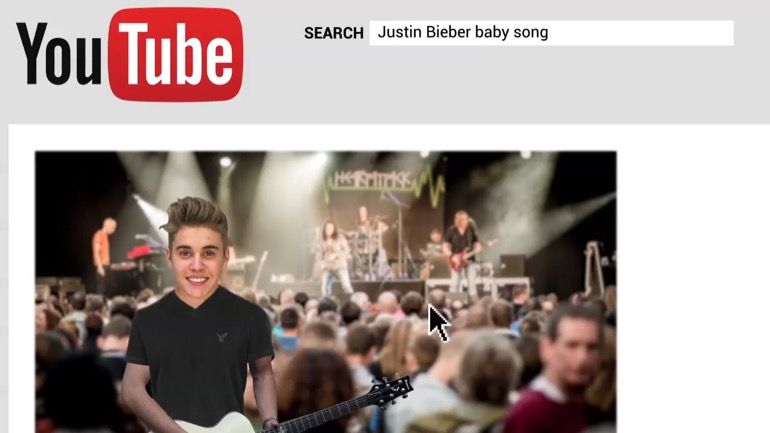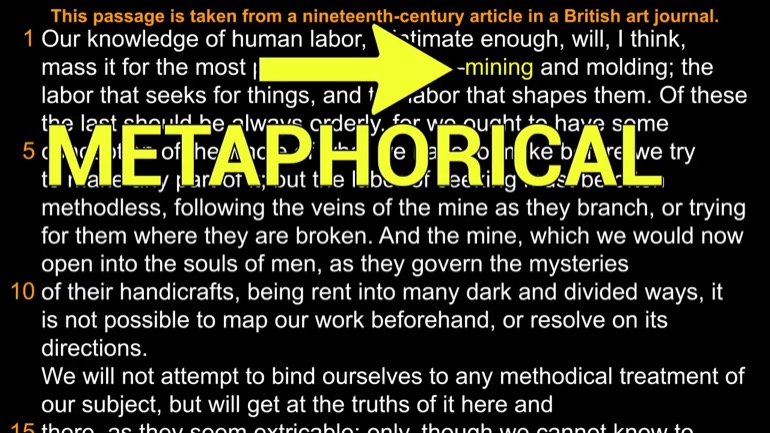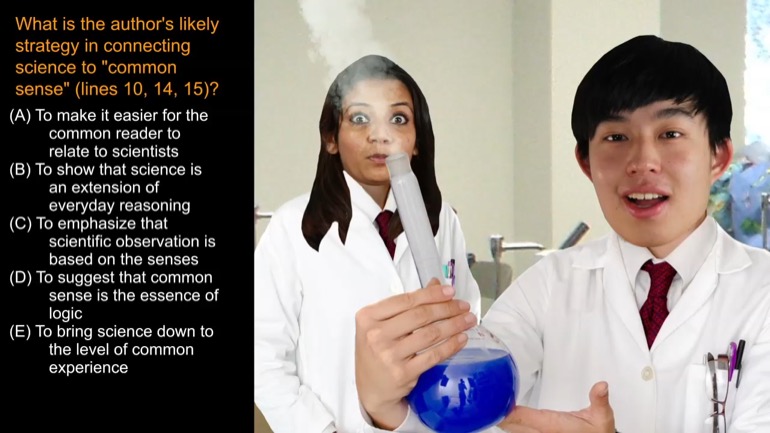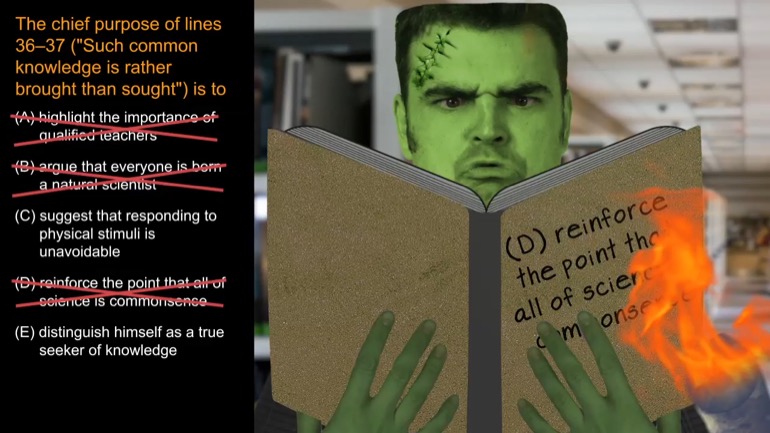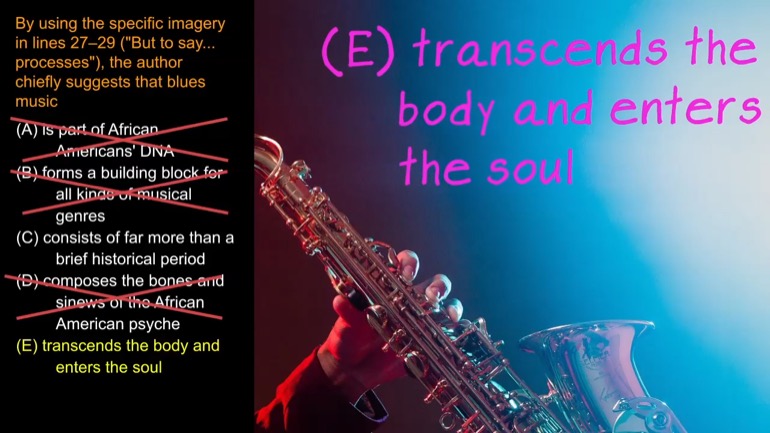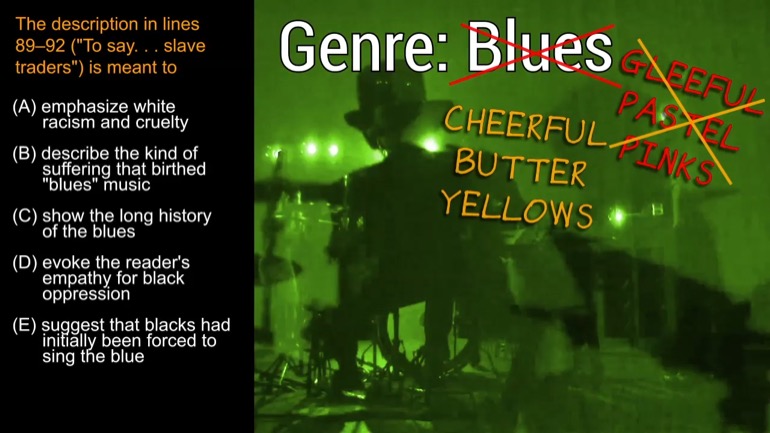ShmoopTube
Where Monty Python meets your 10th grade teacher.
Search Thousands of Shmoop Videos
Passage Drill Videos 153 videos
AP English Language and Composition: Passage Drill Drill 1, Problem 7. What is the principal rhetorical function of paragraphs one to three?
AP English Language and Composition: Passage Drill 1, Problem 8. The quotation marks in the third paragraph chiefly serve to what?
In this AP Language and Composition drill question, read the provided passage and infer information based upon footnote two. AP Language and Com...
AP English Language and Composition 6.6 Passage Drill 207 Views
Share It!
Description:
AP English Language and Composition 6.6 Passage Drill. With what does the author contrast "Mechanical Art"?
Transcript
- 00:00
Edited at https://subtitletools.com
- 00:00
[ musical flourish ]
- 00:03
And here's your Shmoop du jour, brought to you by urns.
- 00:07
They're all Grecian to us. [A cardboard with a smile hangs over the Monalisa painting]
- 00:09
Yeah. We went there.
Full Transcript
- 00:11
All right, here's the poem. Read it. Weep. [Passage appears on screen]
- 00:16
The word "overwrought" in line 42 acts as which of the following?
- 00:21
And here are the potential answers.
- 00:24
All right, so we need to look at line 42 and determine
- 00:27
what the word "overwrought" is doing there.
- 00:29
First, it'd be good to know what the word means in the first place. [The question along with options appears on the screen]
- 00:33
It looks like "overweight," but we somehow doubt the writer's
- 00:36
talking about portly maidens here. [Yin and yang sign spins on the screen]
- 00:38
Uh, you know, the urn is only so big.
- 00:40
The "over" prefix generally accentuates the word it's attached to, [Smiling angel and devil appears on the screen]
- 00:44
so "overwrought" means very... something.
- 00:47
We've probably seen the word "wrought" in "wrought iron," [Juicer splatters juice on canvas and creates a painting]
- 00:50
which is iron that's been beaten and shaped.
- 00:52
Well, basically, it's been through the ringer.
- 00:54
Ding.
- 00:55
So if the word "overwrought" is assigned to a person,
- 00:58
it's saying something like, [A train transforms into a robot]
- 01:00
"that person is very agitated or stressed out."
- 01:05
But is that what it means here?
- 01:07
Or are they trying to pull one over on us? [Smelter & forge and steam engine appears besides author]
- 01:09
If we look at line 42,
- 01:11
"Of marble men and maidens overwrought,"
- 01:14
we could be talking about men and maidens who are stressed out.
- 01:17
They certainly don't appear to have much hair left.
- 01:20
But look at the next line,
- 01:22
"With forest branches and the trodden weed;". [Authors waves from a train engine]
- 01:26
So these maidens are overwrought with [Angry author throws skeleton from train]
- 01:28
forest branches and weeds.
- 01:30
In other words, they're overdecorated with their various [Robot kicks skeleton]
- 01:33
twigs and whatnot.
- 01:35
Either way, it's definitely an adjective and not a verb,
- 01:37
so we can nix options D and E for sure.
- 01:41
And we already established that it's the men and maidens the word is describing, [The author angrily points to skeleton and hugs train engine]
- 01:44
so it looks like B is our answer.
- 01:47
So, yeah, apparently people liked to dress in shrubbery back then.
- 01:51
There's no accounting for taste. [Two hands hold together]
- 01:52
[ say what? ]
Related Videos
AP English Language and Composition: Passage Drill Drill 1, Problem 2. What is the speaker's primary purpose in using onomatopoeia in line four?
Wishing upon a star may help you pass your AP English Language and Composition test, but answering this question would be a safer bet.
Take a look at this shmoopy question and see if you can figure out which device the speaker employs the most.
Feel like shifting gears and answering a question about shifting tones? We've got you covered. Take a look at this question and see if you can foll...
AP English Literature and Composition 1.1 Passage Drill 7. The primary purpose of this passage is what?
